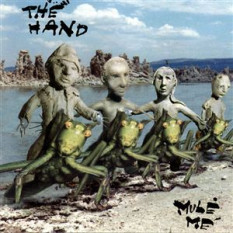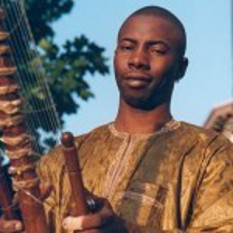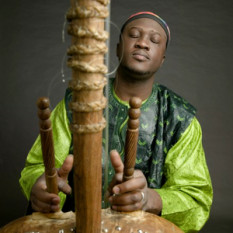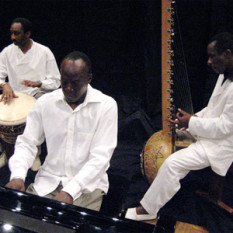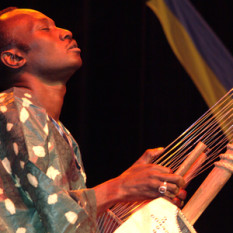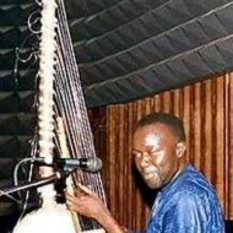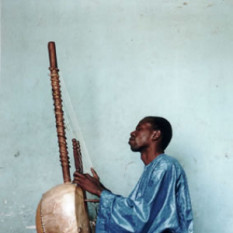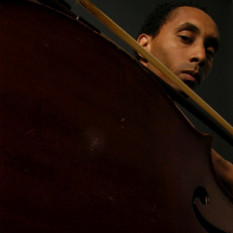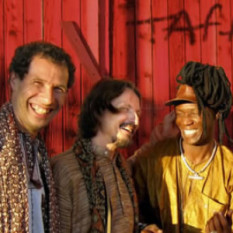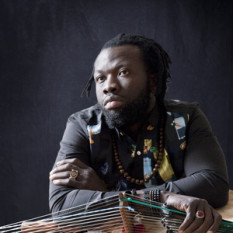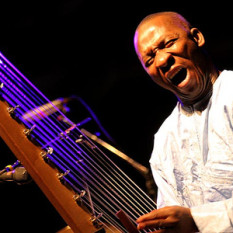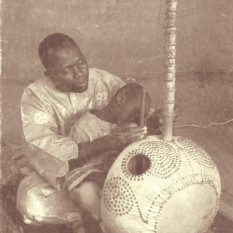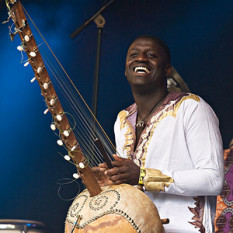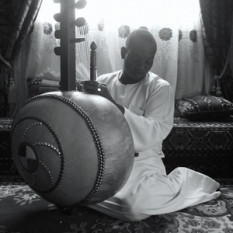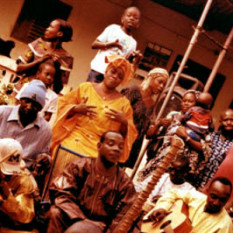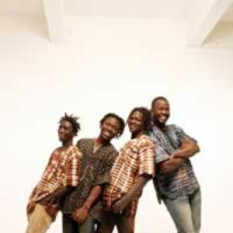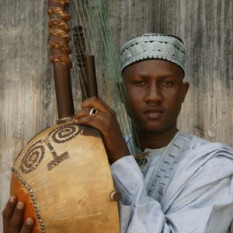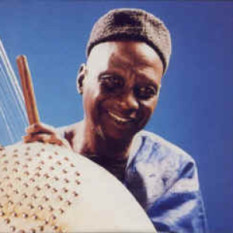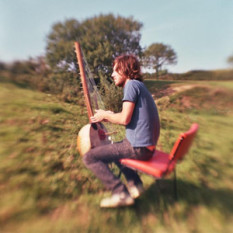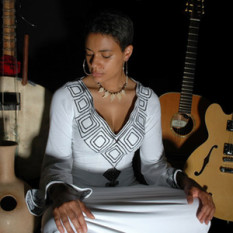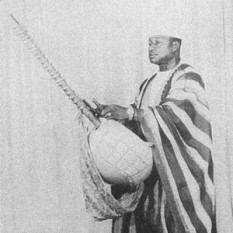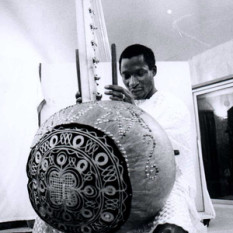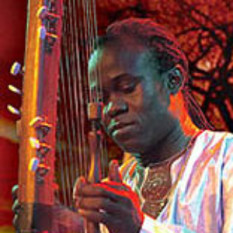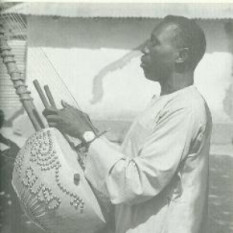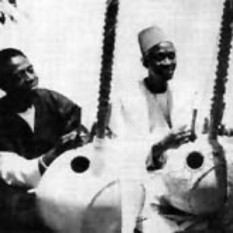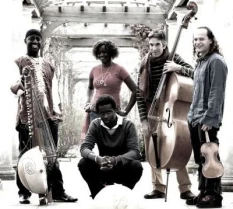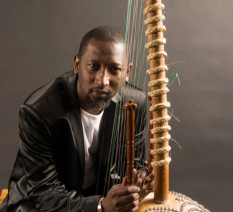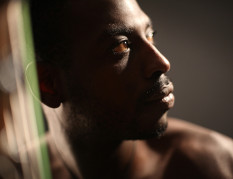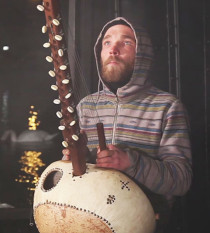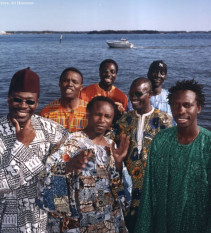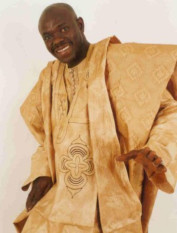A kora is built from a large calabash cut in half and covered with cow skin to make a resonator, and has a notched bridge like a lute or guitar. It does not fit well into any one category of western instruments and would have to be described as a double bridge harp lute. The sound of a kora resembles that of a harp, though when played in the traditional style, it bears a closer resemblance to flamenco and delta blues guitar techniques. The player uses only the thumb and index finger of both hands to pluck the strings in polyrhythmic patterns (using the remaining fingers to secure the instrument by holding the hand posts on either side of the strings). Ostinato riffs ("Kumbengo") and improvised solo runs ("Birimintingo") are played at the same time by skilled players.
Kora players have traditionally come from griot families (also from the Mandinka nationalities) who are traditional historians, genealogists and storytellers who pass their skills on to their descendants. The instrument is played in Guinea, Guinea Bissau, Mali, Senegal, Burkina Faso and The Gambia. A traditional kora player is called a Jali, similar to a 'bard' or oral historian. Most West African musicians prefer the term 'jali' to 'griot', which is the French word.
Traditional koras feature 21 strings, eleven played by the left hand and ten by the right. Modern koras made in the Casamance region of southern Senegal sometimes feature additional bass strings, adding up to four strings to the traditional 21. Strings were traditionally made from thin strips of hide, for example antelope skin - now most strings are made from harp strings or nylon fishing line, sometimes plaited together to create thicker strings.
By moving leather tuning rings up and down the neck, a kora player can retune the instrument into one of four seven-note scales. These scales are close in tuning to western Major, Minor and Lydian modes.[2][3] .

